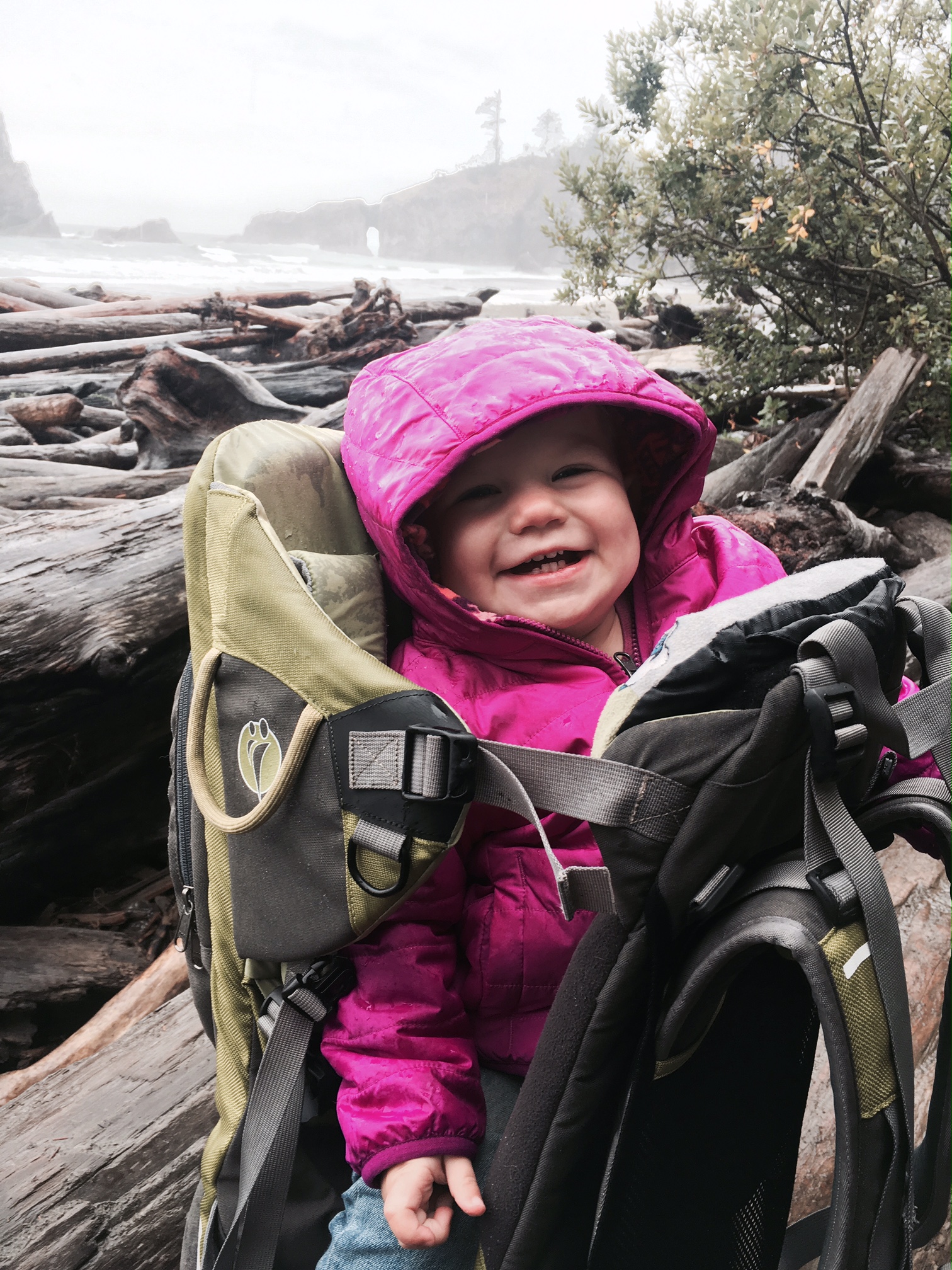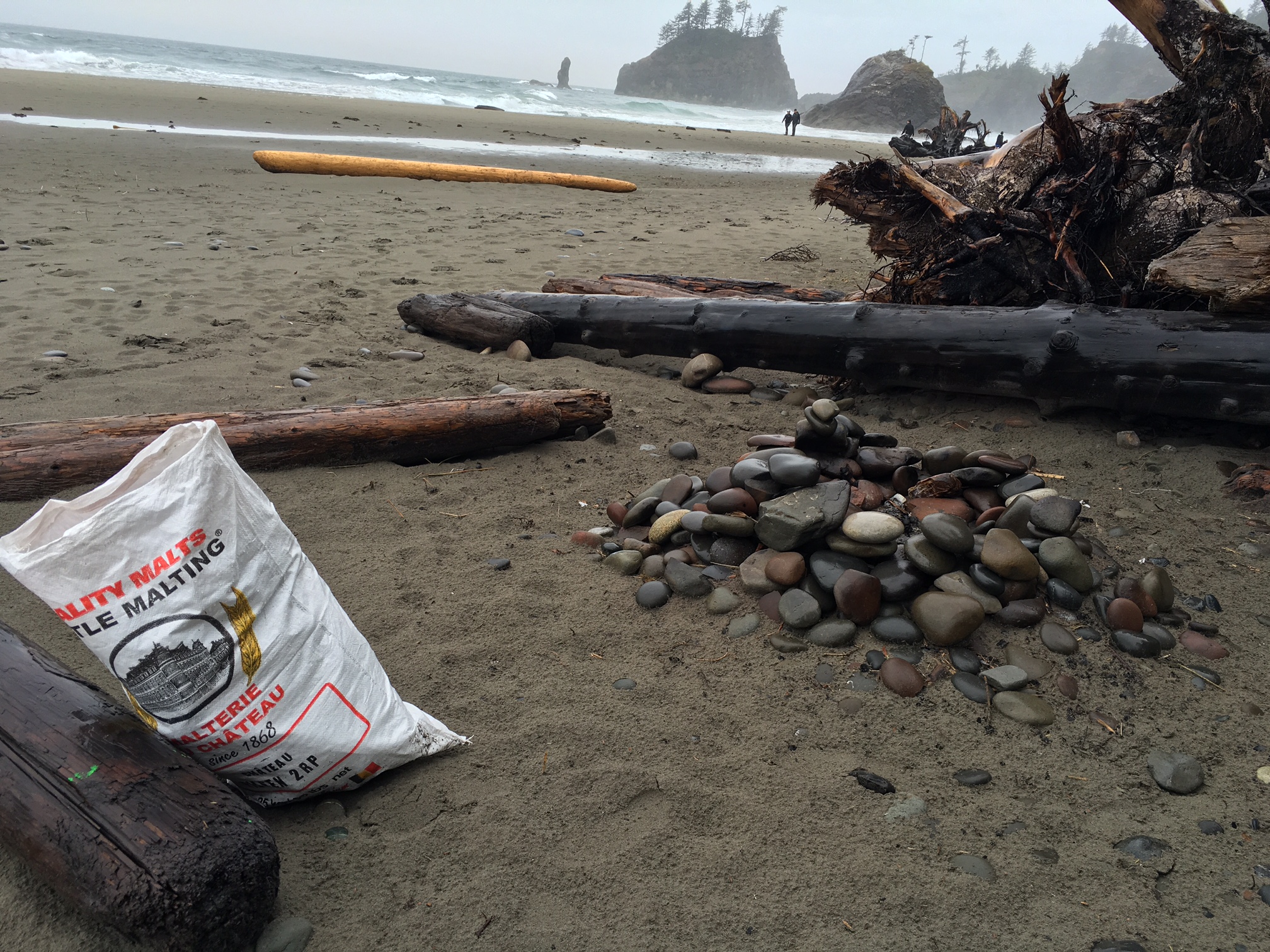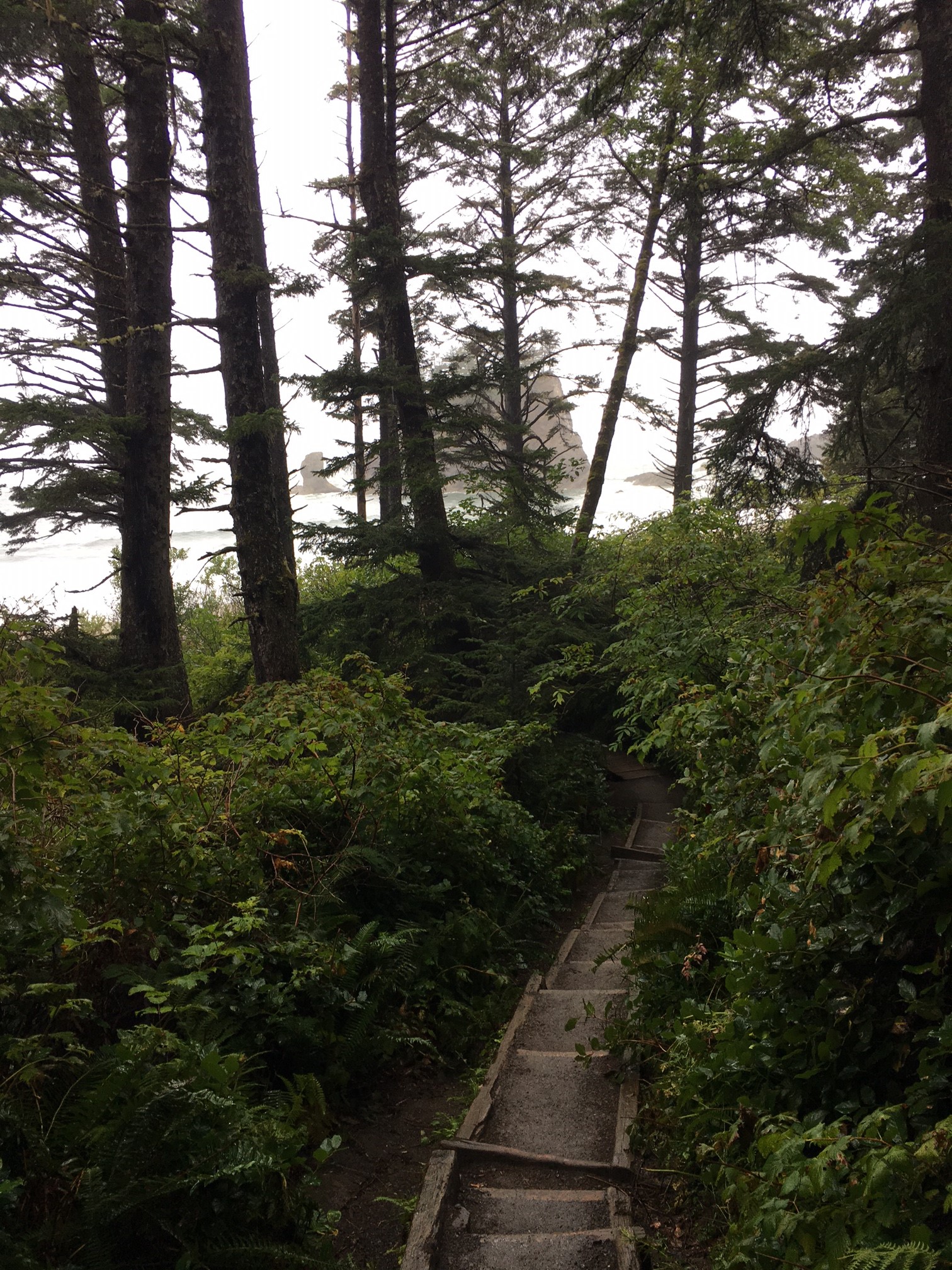Written & photographed by Kara Cardinal, Marine Projects Manager
“In fact, the ocean is the cornerstone of the systems that sustain us – every breath we take is linked to the sea.” – Sylvia Earle
It was my daughter and my first solo hike on the coast. We walked the drizzly path through the craggily, windswept trees towards the ocean. We were actually passing through what is known as the Pacific temperate rain forest, where enchanting trees grow tall and are covered with lush, green mosses and ferns, and where the forest kisses the coastline of the mighty Pacific.
As the colors change from deep green to a misty gray and the air grows thicker with salty mist, we know we are near the edge of the ocean. We are actually here as part of the annual International Coastal Cleanup put on by Washington Coast Savers, as well as other partners including the Surfrider Foundation, the Olympic Coast National Marine Sanctuary, the National Parks Service and many others. This effort is part of a larger movement to reduce the amount of marine debris in our oceans, which can be found in form of tiny plastic nurdles, to plastic bottles and bags, to derelict fishing gear. Marine debris is a global problem that threatens oceans and coasts, marine life, our economy, safe navigation, and human health and safety. The Nature Conservancy is doing our part to reduce marine debris through our derelict crab pot removal projects with the Quinault Indian Nation and the Quileute Tribe.
We emerge through the trees, scramble over the soggy drift wood, and there it is – the Pacific Ocean. That first sight and first deep breath inhaled from the sea will never grow old. Every time I come here I think to myself how lucky am I? How lucky am I to live here and how lucky am I that I get to devote my life to taking care of this precious resource?
We pull out our trash bag and begin our service – bottle cap here, styrofoam there, a straw almost invisible amongst the riprap at the tide line. Many people engage us in conversation, curious about what treasures we are collecting. When I tell them it’s trash, they look a bit confused until I tell them about this larger effort.
We stumble upon a sea star that appears to have suffered from the Sea Star Wasting Syndrome and we stop a moment to admire the beauty that it once was. A little girl sees me looking at it. In a language I don’t recognize, she excitedly calls her family over to look at this wondrous creature. To her it was perfect, and I imagine it will be a cherished memory she will nostalgically look back on years from now on her trip to the iconic Washington Coast. Because that’s what the sea does – once you experience the magic of this place, it becomes a part of you.
As Marine Projects Manager for the Nature Conservancy in Washington, I get to participate in many different forms of ocean conservation – from protecting the habits and sustainable uses along the Washington Coast through our involvement in the statewide Marine Spatial Planning process, to working with fishermen on sustainable fishing gear . But the aspect I love most about my job is working alongside the people that truly love the ocean as much as I do – from the fishermen, to surfer, to the scientist to the little girl so fascinated by the sea star.

































